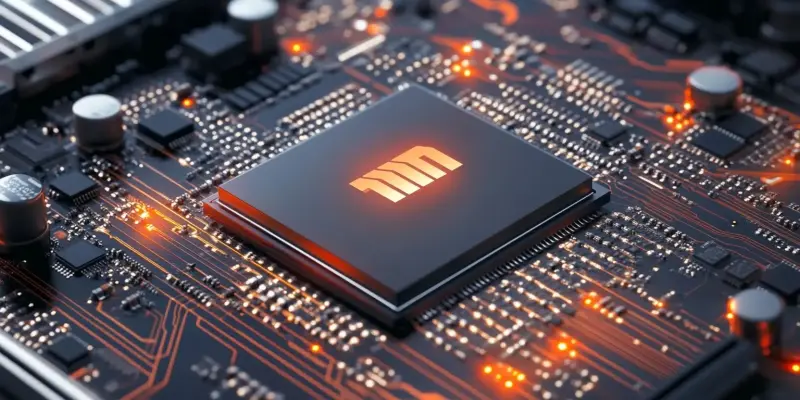The shift in the consumer CPU market towards AMD processors has been nothing short of remarkable.According to Amazon’s sales report for March, AMD has captured nearly 79% of the market share, selling a staggering 31,600 processors. In contrast, Intel managed to sell only 7,500 units, securing a 21% share. This significant performance disparity highlights a clear preference for AMD among consumers, which is also evident in revenue figures.AMD’s total revenue reached $7.8 million, representing a 420% increase compared to Intel’s $1.5 million. As the market continues to evolve, it is essential to understand the factors that have contributed to AMD’s growing dominance and how it maintains a competitive edge.
Market Dynamics and Consumer Preferences
One of the key factors driving AMD’s market dominance is its aggressive pricing strategy.AMD’s average selling price (ASP) stands at $247, higher than Intel’s $209. The Ryzen 7 9800X3D, which is priced at $479 and has sold over 6,000 units, has played a pivotal role in boosting AMD’s ASP. This model’s exceptional price-to-performance ratio has made it a popular choice among consumers, further solidifying AMD’s market position. However, it’s worth noting that some Ryzen 9XX0X3D units were not included in the report, suggesting that actual sales might be even higher.
AMD’s diverse product lineup also contributes to its success.Popular models such as the Ryzen 5 5500 and Ryzen 7 7800X3D have performed exceptionally well, each selling over 3,000 units. This versatility across multiple price points and specifications ensures that AMD caters to a wide range of customer needs.On the other hand, Intel’s best-selling model, the Core i5-12400F, ranked fourth with around 3,000 units sold. These figures highlight AMD’s overall dominance and its ability to capture consumer interest across various market segments.
Technical Superiority and Innovation
Apart from competitive pricing, AMD’s technological advancements have played a crucial role in its market success. The company’s emphasis on innovation has led to the development of processors that offer superior performance, efficiency, and reliability.The Ryzen series, in particular, has garnered widespread acclaim for its high core counts, impressive multi-threading capabilities, and energy efficiency. These attributes make AMD processors a preferred choice for both gaming and professional workloads, adding to their widespread appeal.
Furthermore,the integration of advanced features such as 3D V-Cache, seen in the Ryzen 7 9800X3D, has further enhanced the performance of AMD’s processors. This technology improves cache memory performance, leading to significant gains in gaming and other compute-intensive tasks. The consistent delivery of cutting-edge features has helped AMD build a loyal customer base, providing a compelling reason for consumers to choose its products over those of its competitors.
However, it hasn’t all been smooth sailing for AMD. The Ryzen 7 9800X3D faced some reported issues of unexpected failures, mostly on Asrock motherboards, with signs of burn or electrical damage. Although AMD attributed these problems to memory compatibility issues, the explanation appeared insufficient as many affected chips initially functioned before ultimately failing. Despite these challenges, AMD’s robust response and commitment to resolving such issues have helped maintain consumer trust and confidence.
Growing Popularity and Future Prospects
The rising popularity of AMD processors is further supported by data from the Steam survey for March, which indicated a 6.5% increase in AMD’s market share in the processor segment, bringing the total to a record high of 37.6%. This metric underscores the growing acceptance and preference for AMD within the broader PC gaming community. The increased visibility and positive feedback from gamers and tech enthusiasts have bolstered AMD’s reputation, creating a positive cycle of growth and adoption.
Looking towards the future, AMD’s continued focus on innovation, competitive pricing, and expanding its product portfolio will be vital in sustaining its market leadership. As the demand for high-performance computing grows, AMD is well-positioned to capitalize on emerging trends such as AI, machine learning, and other advanced applications.
Takeaway Insights
The consumer CPU market has witnessed a remarkable shift towards AMD processors. Amazon’s sales report for March indicates that AMD has captured nearly 79% of the market share, with an astounding 31,600 processors sold. In stark contrast, Intel managed to sell only 7,500 units, securing a mere 21% share.This significant performance gap underscores a strong consumer preference for AMD, also reflected in revenue figures. AMD’s total revenue surged to $7.8 million, marking a 420% increase compared to Intel’s $1.5 million. The factors driving AMD’s growing dominance are multifaceted, including advances in technology, aggressive pricing strategies, and effective marketing.AMD’s ability to deliver high-performance processors at competitive prices has resonated well with consumers, contributing to its market leadership. As the CPU market continues to evolve, understanding these dynamics is crucial for anticipating future trends and shifts in consumer behavior. The competitive landscape between AMD and Intel will likely intensify as both companies strive to innovate and capture market share.

